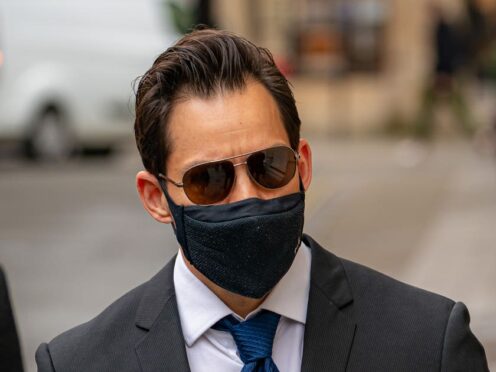
A police officer has denied raping a woman, telling a court he does not remember her.
Sergeant David Stansbury appeared at Bristol Crown Court on Wednesday morning where he is on trial accused of three counts of rape.
Giving evidence, Stansbury denied the charges and insisted he did not remember being called to an incident at her property.
Stansbury, 43, of Ilminster in Somerset, is accused of raping the woman in Plymouth, Devon, between October 23 and November 30 2009.
Stansbury, who was an officer with Devon and Cornwall Police at the time, had been called to the woman’s address and took her statement after a suspect had tried to smash her door in.

She had called 999 and Stansbury was among the officers who responded.
The alleged victim said she believes the first of three assaults started within days of her original 999 call.
His defence barrister, Jenny Tallentire, questioned Stansbury, asking if he had raped or had sex with the complainant, with him answering “no” to both.
She said: “You will recall that when you were asked in interview, and that was some time ago now in November 2020, whether you remembered this incident – you didn’t. As you stand here now do you remember that incident?”
Stansbury said: “I wish I did but I do not.”
Ms Tallentire said that he had been shown a photograph of the alleged victim during the police interview and Stansbury had said he did not recognise her.
Asked if he recognised her now, Mr Stansbury said he did not.
Presenting him with documents from the day of the incident, Ms Tallentire asked if there was anything “unusual” or “distinctive” about the incident and his notes.
He said there was “not at all”, with Judge William Hart accepting that in the 11 intervening years, a lot of “water would have flowed under the bridge since then”.
The court also heard that the alleged victim believed Stanbury had a birthmark or tattoo on the inside of his leg.

Stanbury said this was not the case and had shown the interviewing officer in 2020 that he did not have one.
Stansbury was also questioned by the prosecution barrister, Virginia Cornwall, who branded him “dishonest”.
She said that his records showed a man who had lied in the past, having been caught falsely recording overtime between November 2018 and January 2019.
“During that time mistakes were made, I fully admitted that,” he said.
“Unfortunately, I was extremely poorly at the time, and I received no support.”
He told the court he was suffering at the time following the death of his mother and was diagnosed with bipolar and obsessive-compulsive disorders.
While Stansbury was allowed to continue operating as a sergeant he was placed under supervision.
Ms Cornwall also accused Stanbury of having an “unusual interest” in the alleged victim, having accessed her personal records on a number of occasions after the incident at her home, including after he had passed the case on to another officer.
She also said GPS data suggested he had returned to the complainant’s street multiple times, which differed from his previous route.
Ms Cornwall said: “You can’t escape the reality of the GPS data showing your interest in her property on various occasions, can you?”
He said that he may have been on the alleged victim’s street more following the domestic incident to “provide reassurance” to her and the community through an increased police presence.
He also said that looking at logs related to her would have been “necessary for the job” he was doing at the time.
Ms Cornwall questioned if any of the evidence had triggered memories of the complainant, or if it was “a complete blank despite all the information that had been present in this trial”.
He insisted he could not remember the alleged victim or the incident.
Stansbury also said he believed himself to be a victim, adding: “She’s told a complete lie that’s completely ruined my life.”
The trial continues on Thursday.

Enjoy the convenience of having The Sunday Post delivered as a digital ePaper straight to your smartphone, tablet or computer.
Subscribe for only £5.49 a month and enjoy all the benefits of the printed paper as a digital replica.
Subscribe